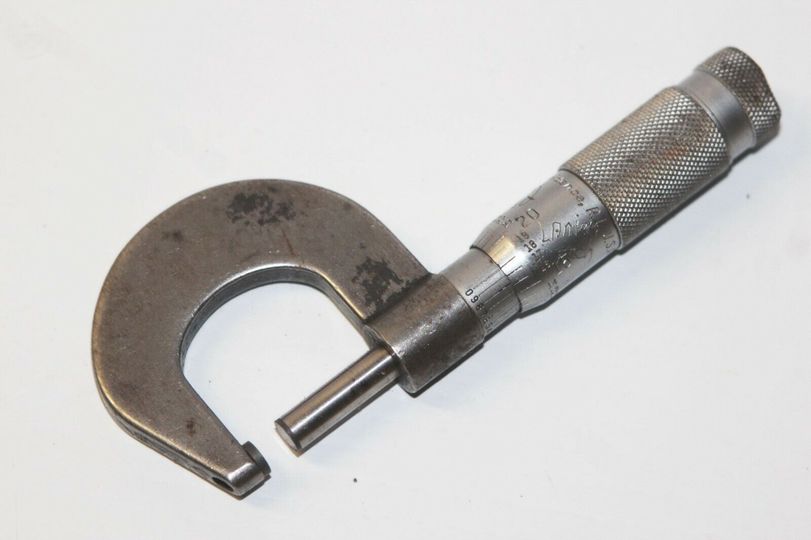History
The micrometer, also known as a micrometer screw gauge, has its origins in the early 19th century. Its development is credited to the French inventor Jean Laurent Rixens, who, in 1829, patented the first micrometer. This revolutionary tool was designed to measure small dimensions with exceptional accuracy, a feat that was challenging with the measurement devices available at the time. Rixens’ invention was quickly adopted by machinists and engineers due to its precision and reliability.
Initially, micrometers were primarily used in the fields of manufacturing and mechanical engineering, where precise measurements of parts were crucial for quality control and functionality. The design evolved over time, incorporating various improvements such as the addition of vernier scales and improved materials, which enhanced its accuracy and durability.
Usage
The vintage micrometer machinist tool operates on the principle of a screw mechanism, which allows for fine adjustments and highly accurate measurements. The tool typically consists of a calibrated screw, a movable spindle, and an anvil. The object to be measured is placed between the anvil and the spindle. By turning the screw, the spindle moves closer to or further away from the anvil, compressing the object and allowing for a precise measurement of its dimensions.
Micrometers are commonly used to measure the thickness of materials, the diameter of small objects, and the distance between surfaces with high precision. The tool’s ability to measure in micrometers (millionths of a meter) or mils (thousandths of an inch) makes it indispensable in fields requiring exacting standards, such as aerospace, automotive, and precision engineering.
Legacy
The legacy of the vintage micrometer machinist tool lies in its pivotal role in advancing precision measurement. Before the widespread use of electronic measuring devices, the micrometer was a cornerstone of quality control and mechanical precision. It enabled machinists and engineers to achieve tolerances that were previously unattainable, thus driving progress in various technological fields.
Over the years, the micrometer has undergone significant improvements and modernizations, including digital and electronic versions that offer enhanced features and ease of use. However, the classic vintage micrometer remains a symbol of precision engineering and craftsmanship. Collectors and enthusiasts prize these tools for their historical significance and intricate design.
Today, vintage micrometers are often displayed in museums and collections, serving as a testament to the ingenuity of early mechanical engineering. Their enduring presence in workshops and toolboxes highlights the lasting impact of these early precision instruments on the world of manufacturing and technology. The micrometer’s legacy endures as a reminder of the meticulous work and innovative spirit that drove the evolution of precision measurement.

Leave a Reply